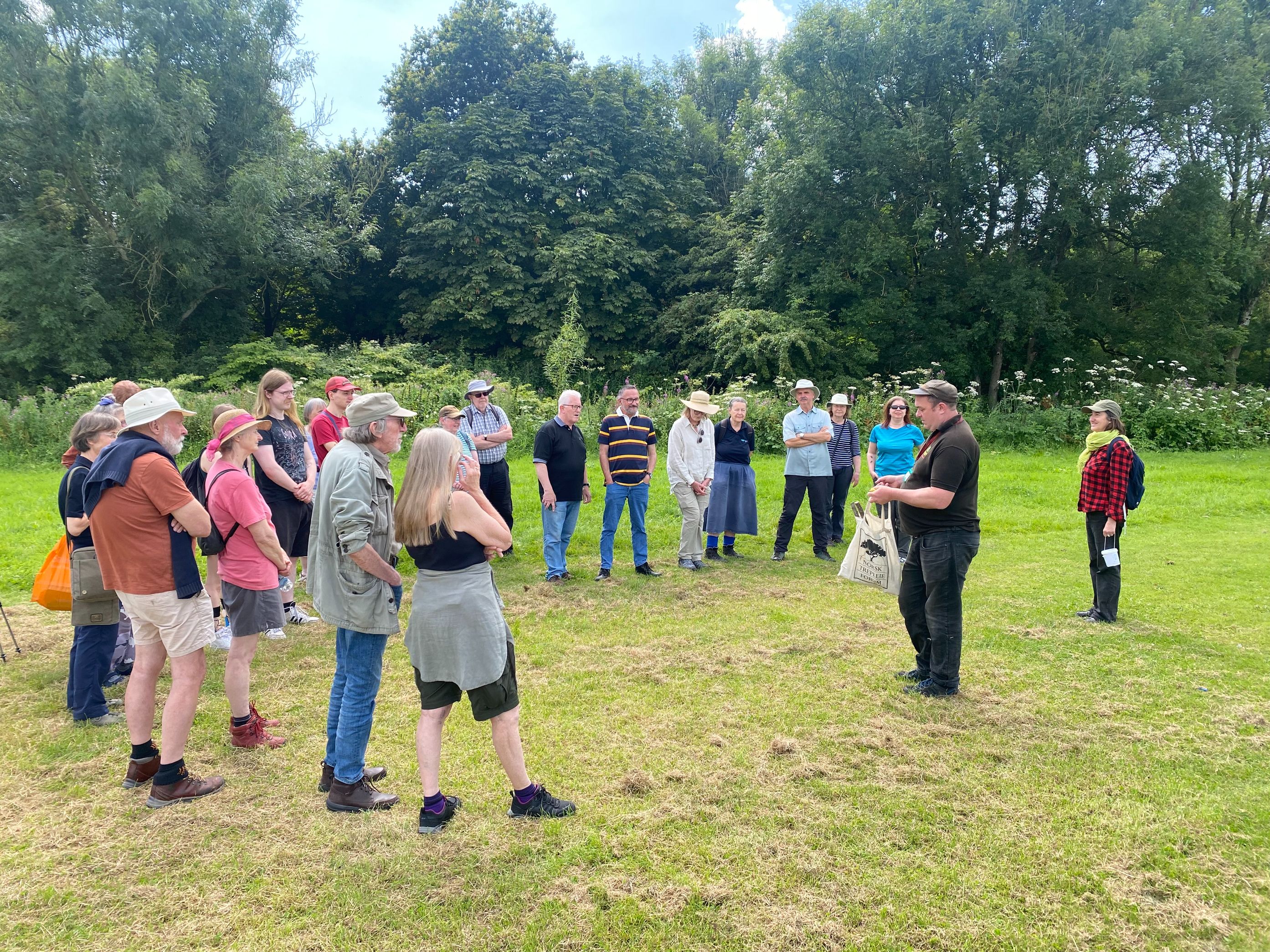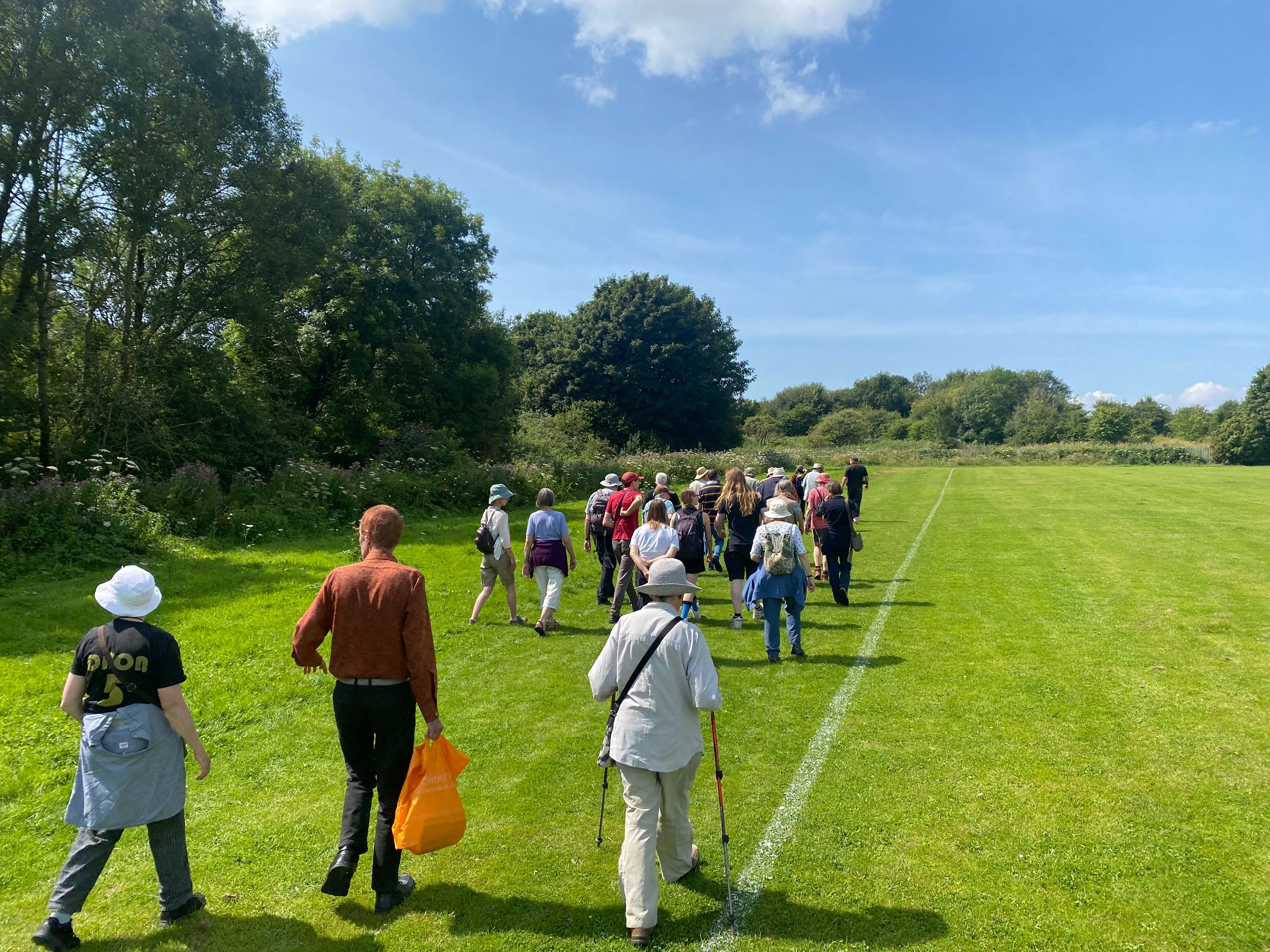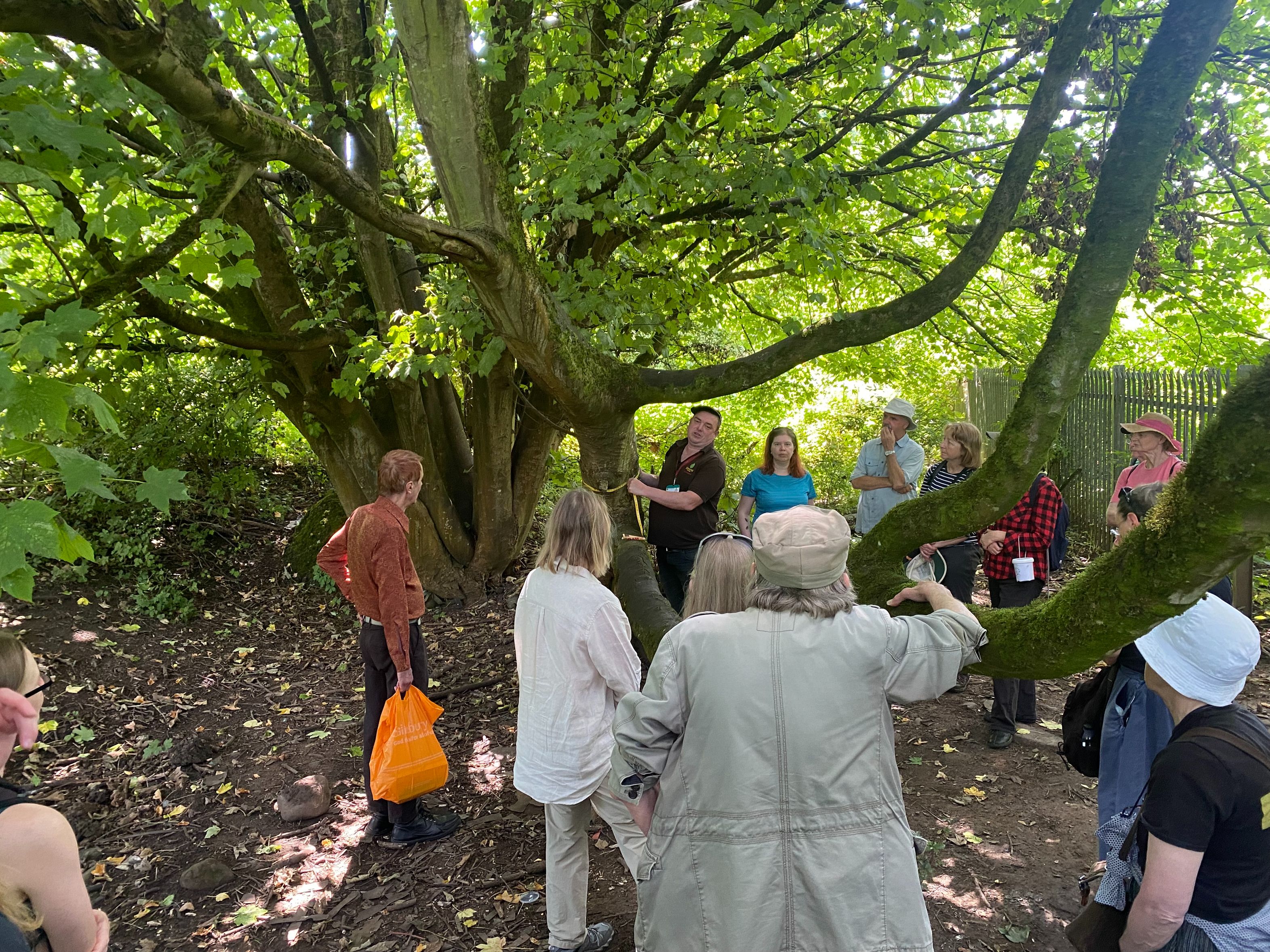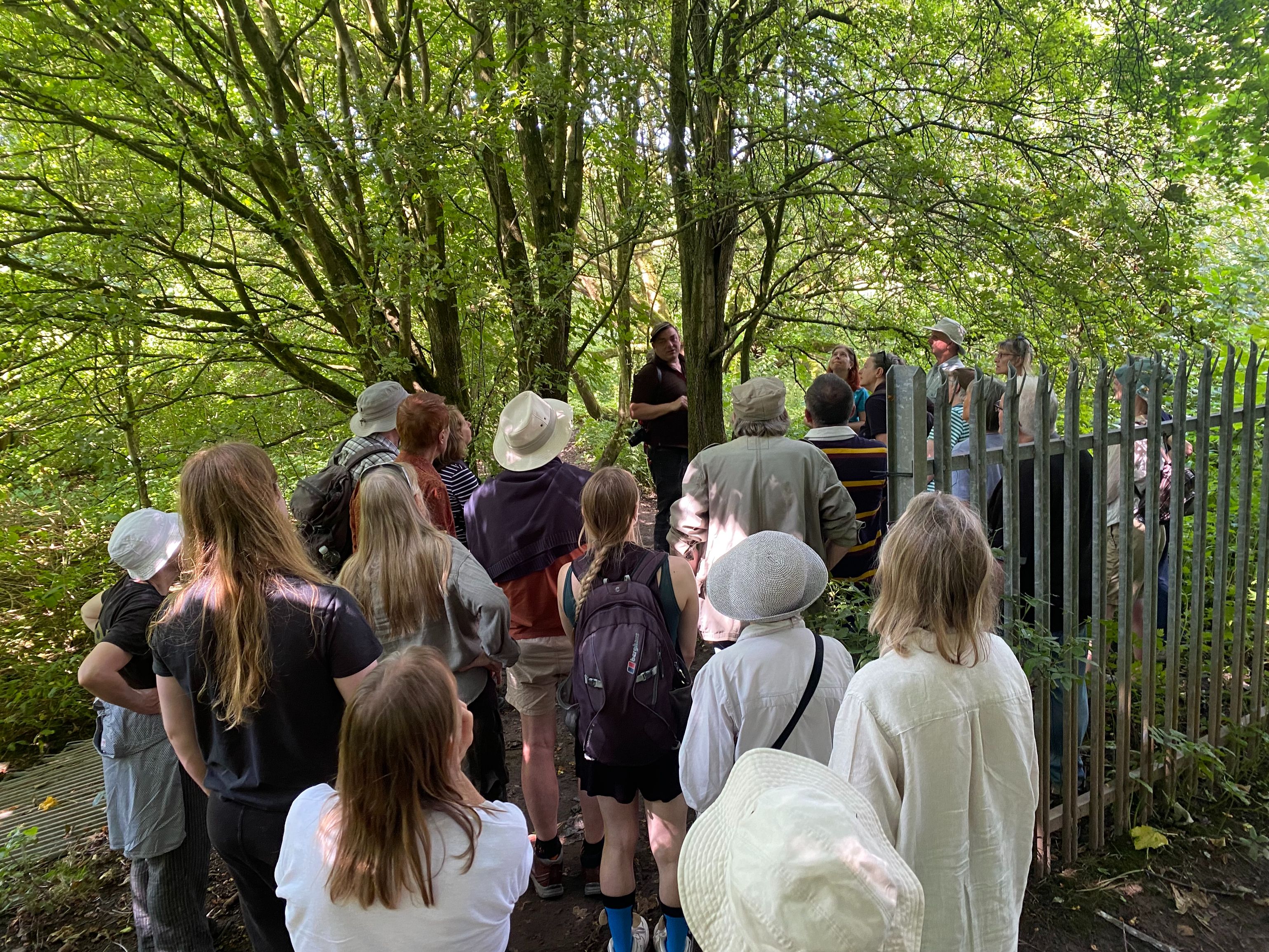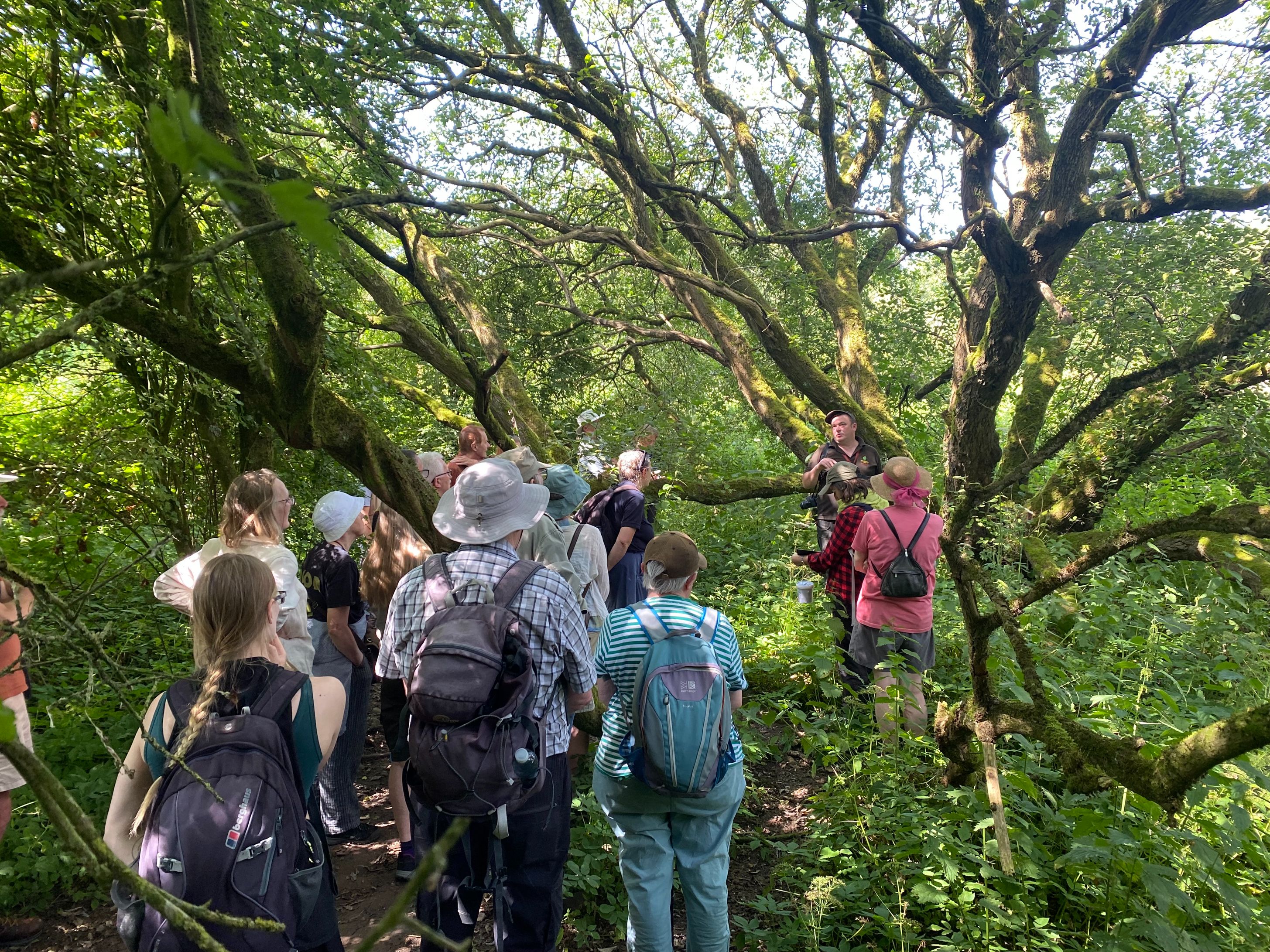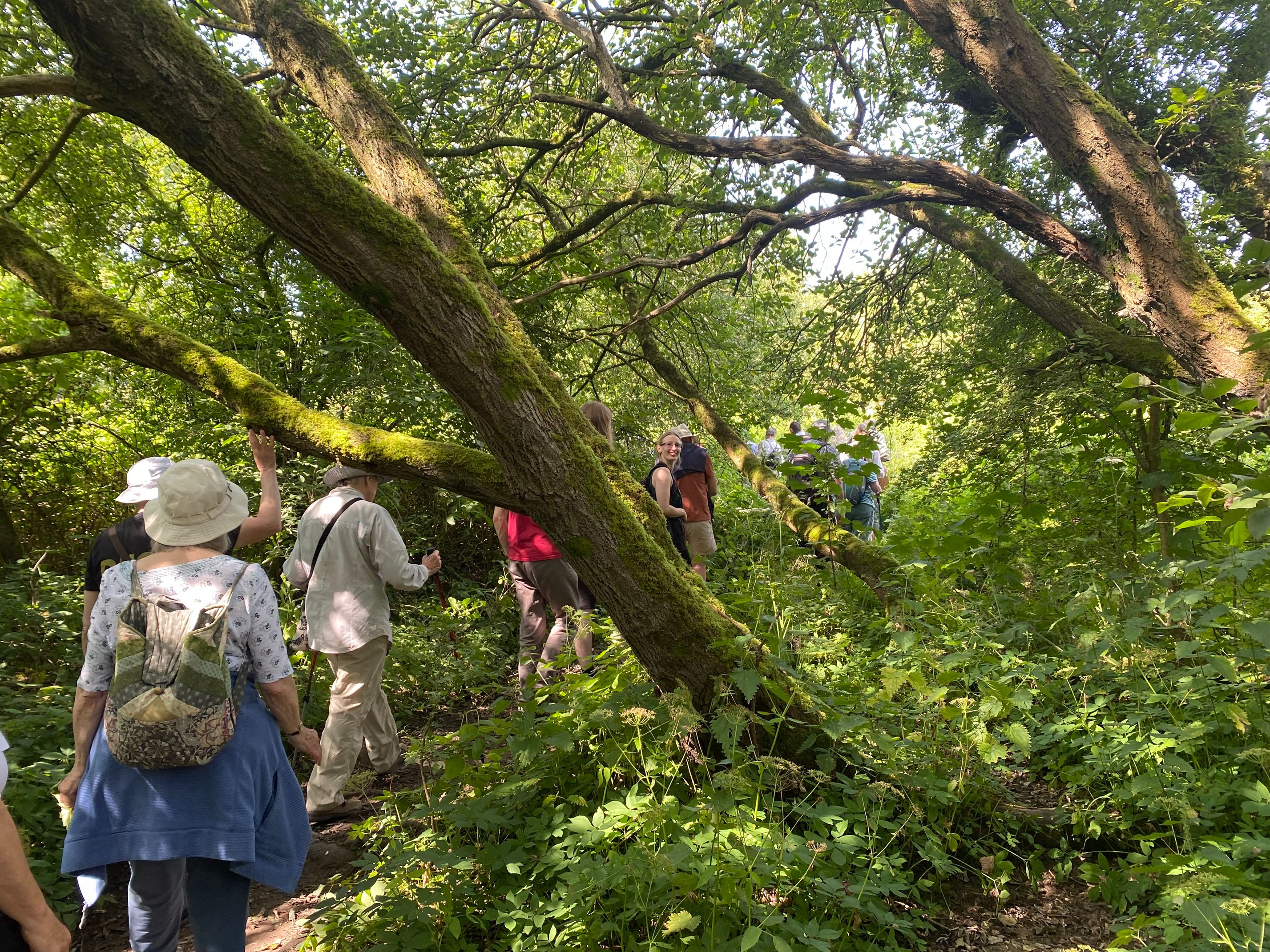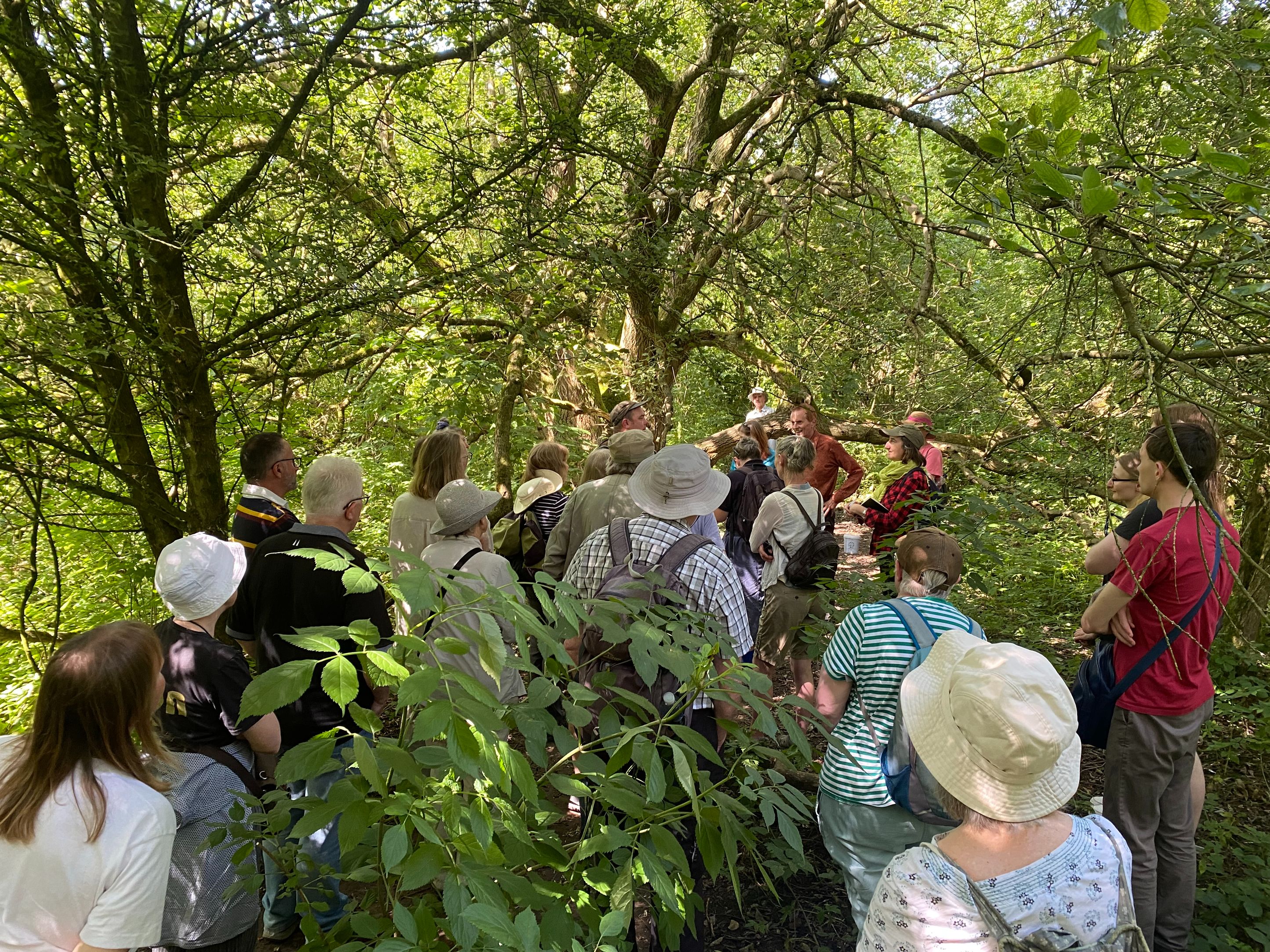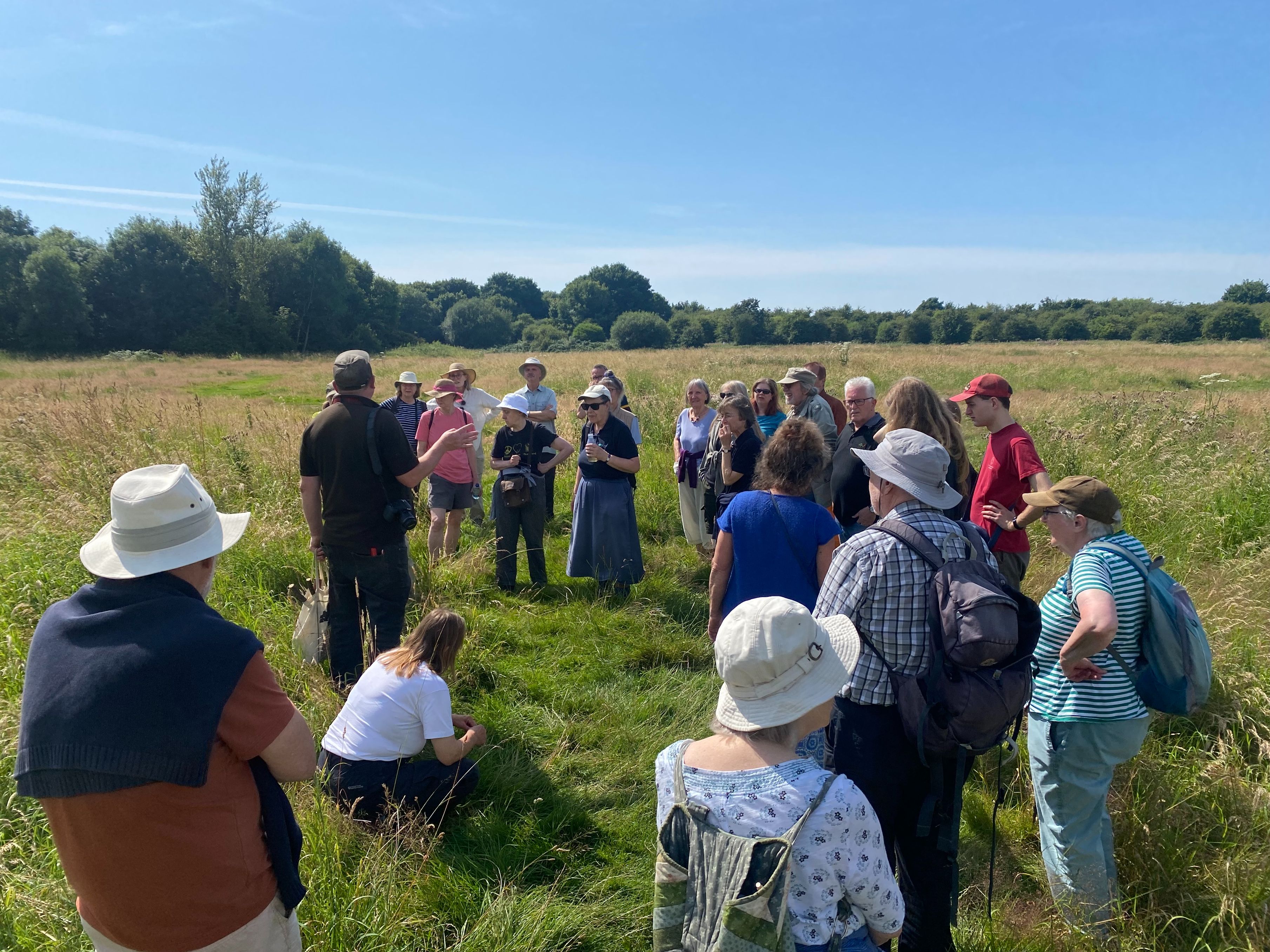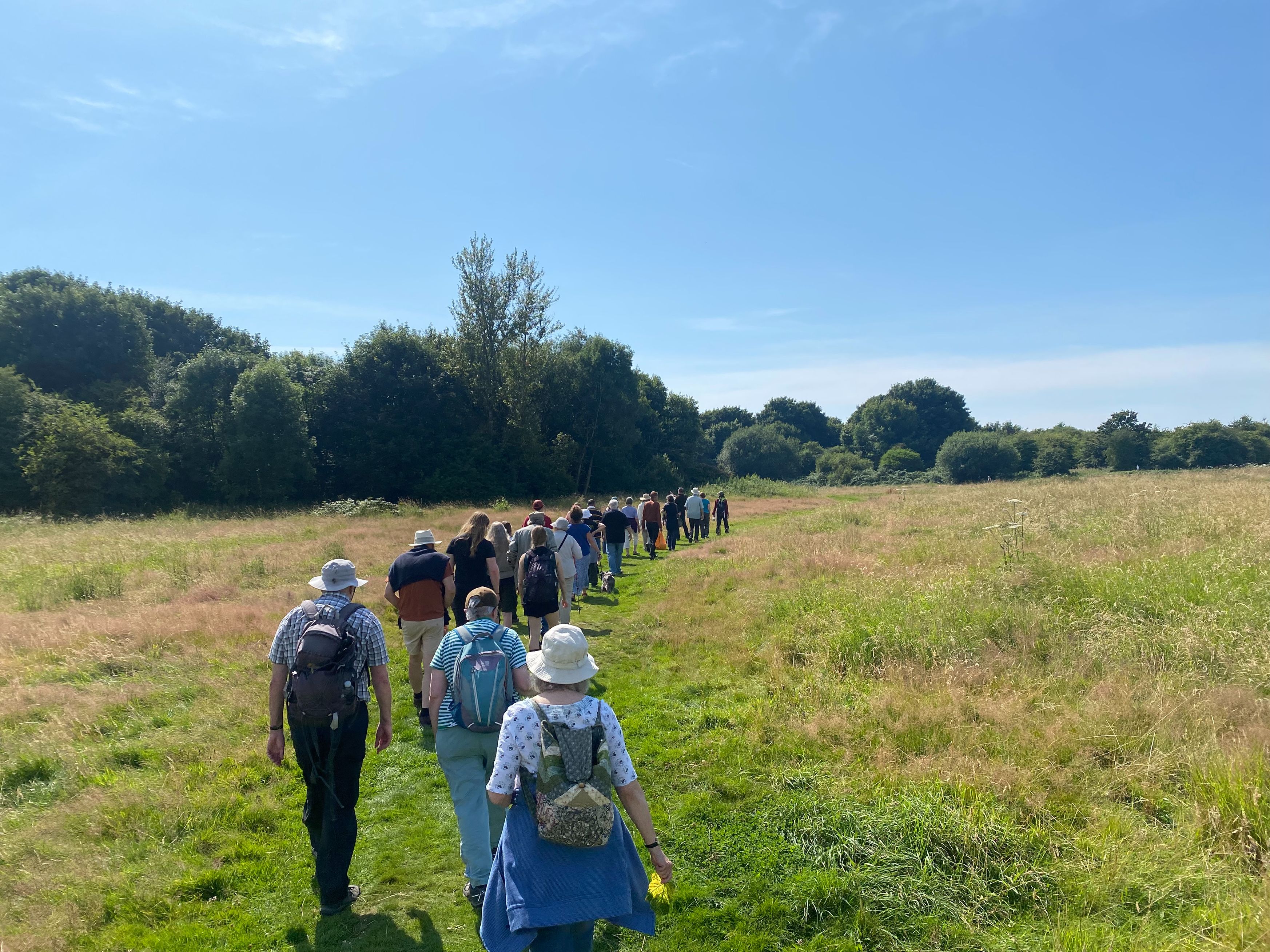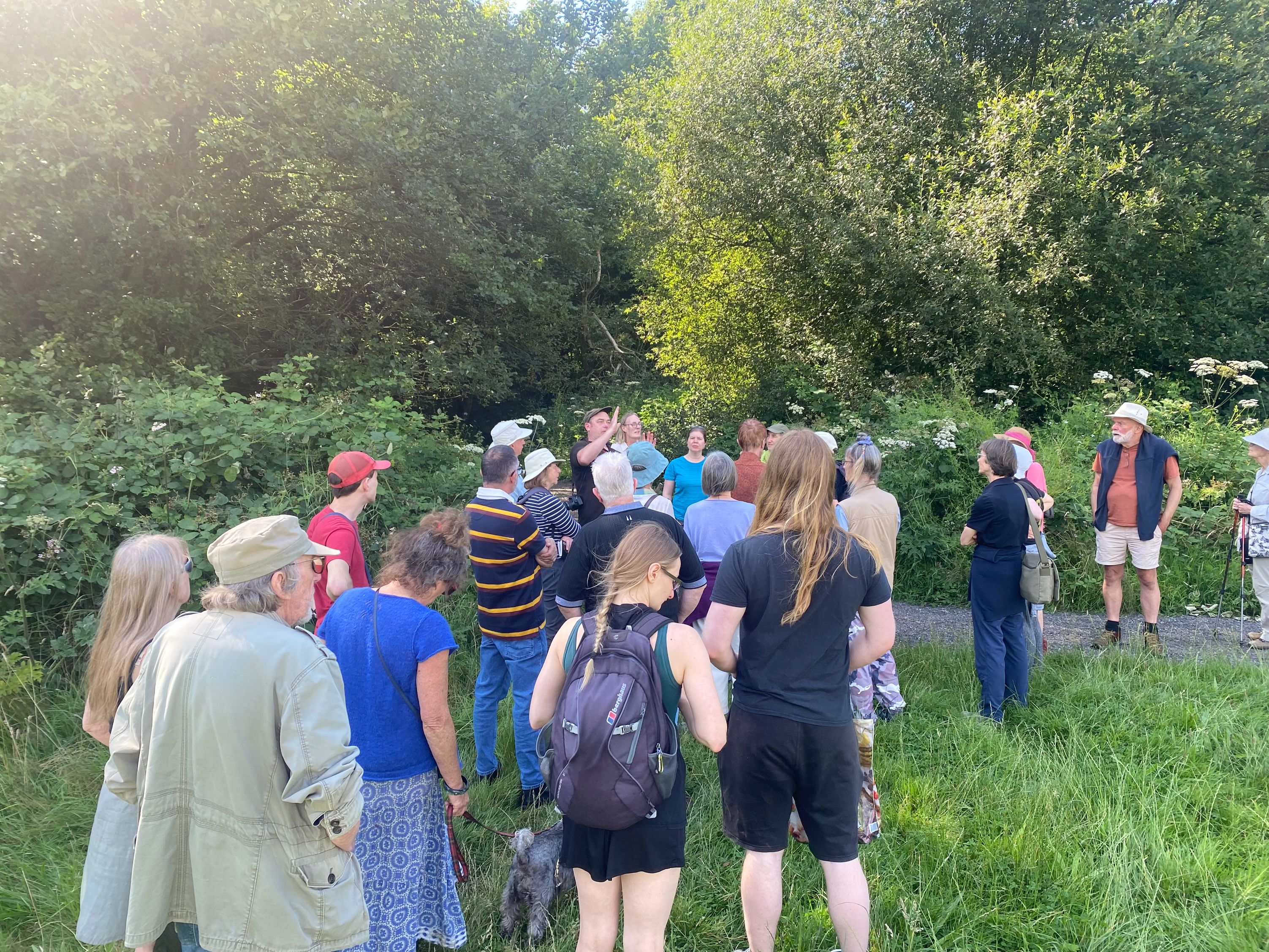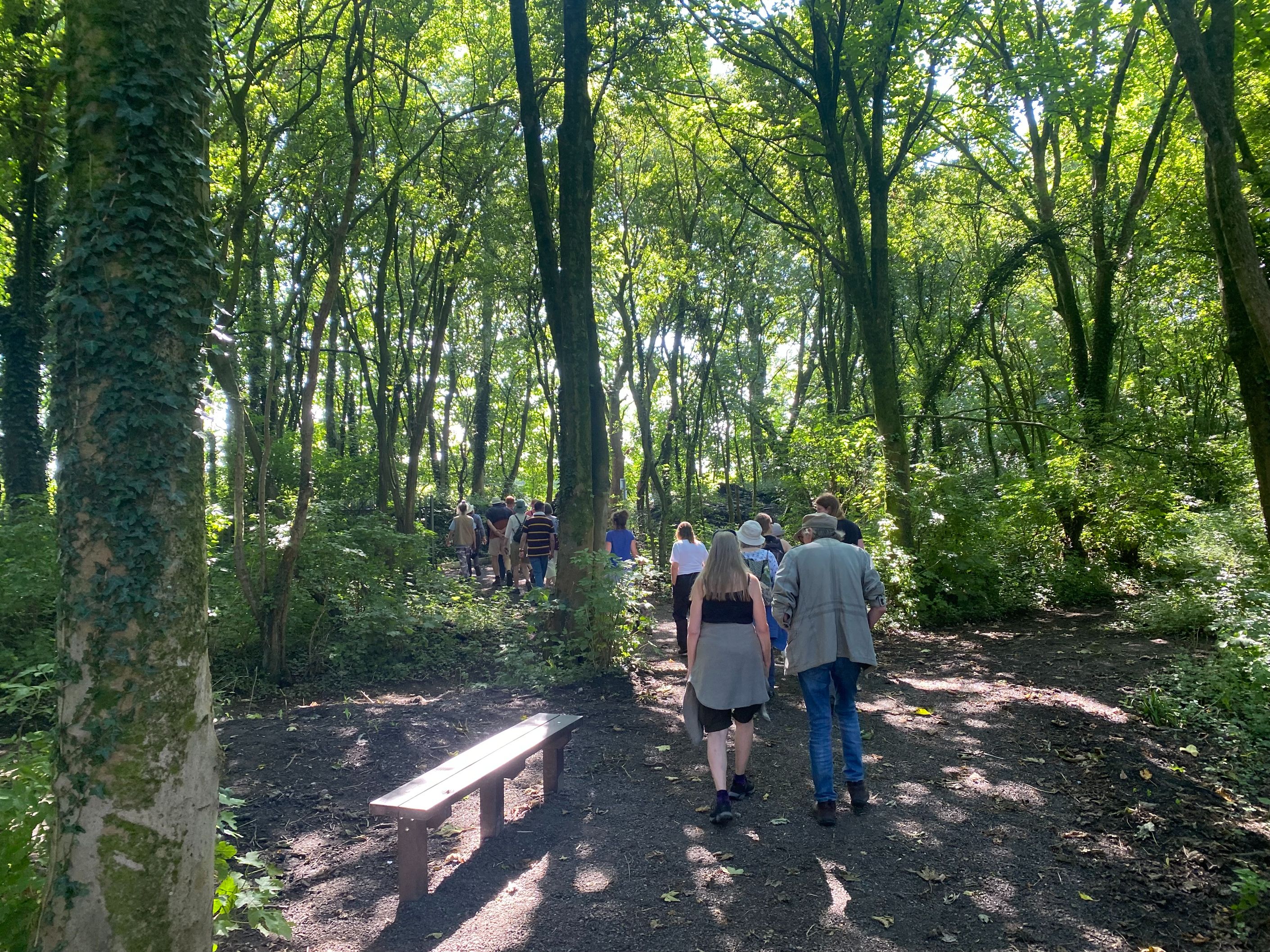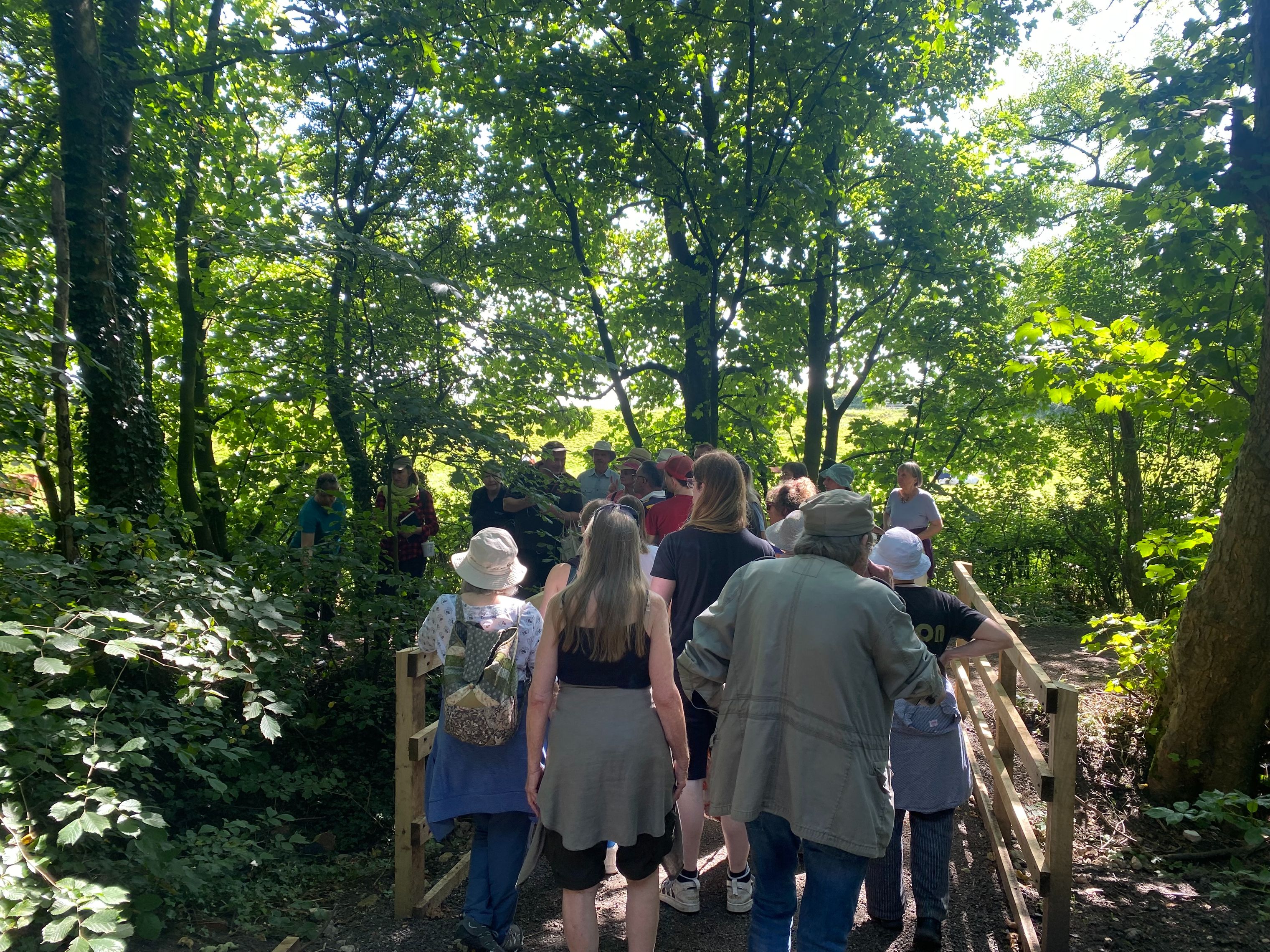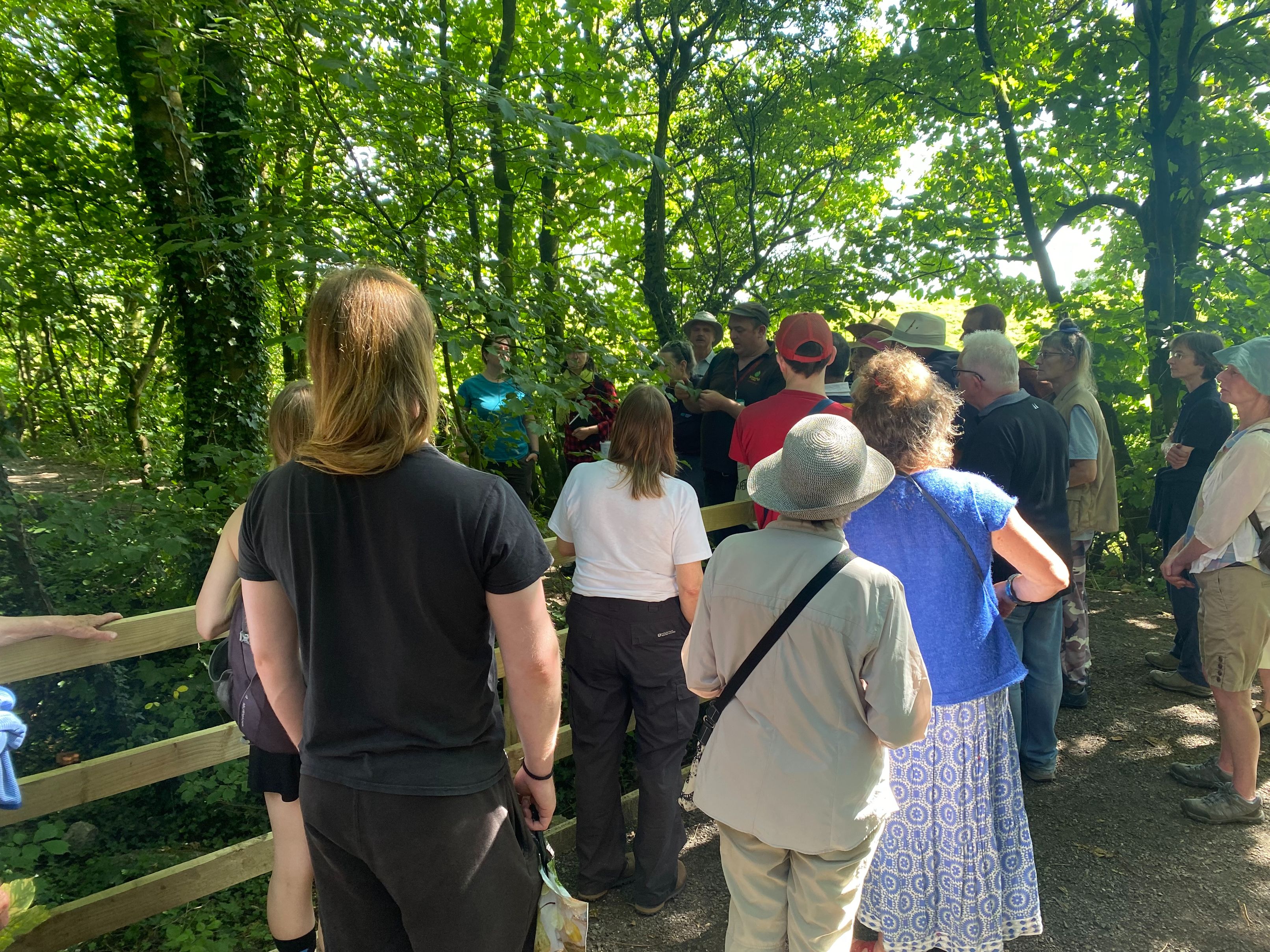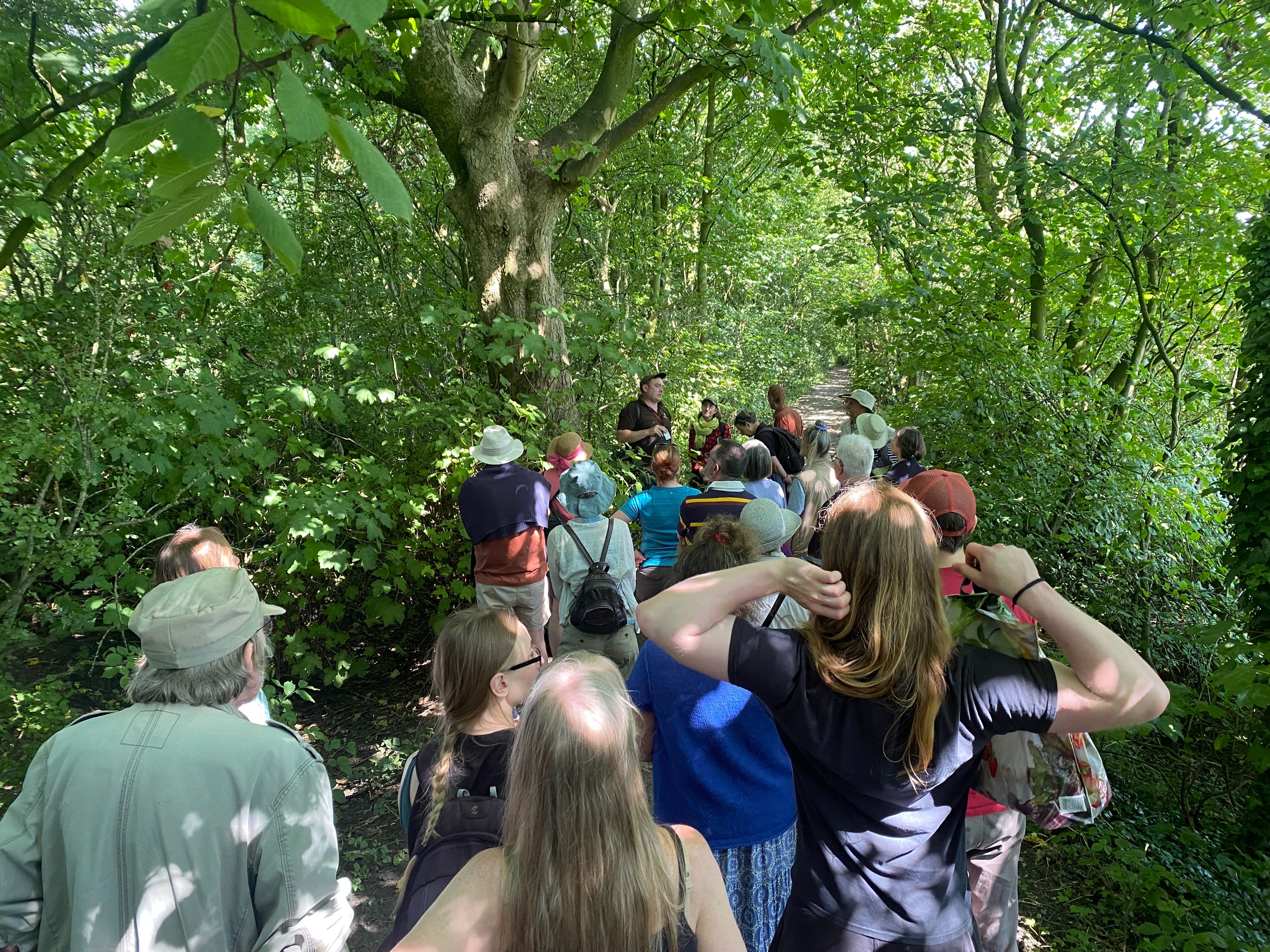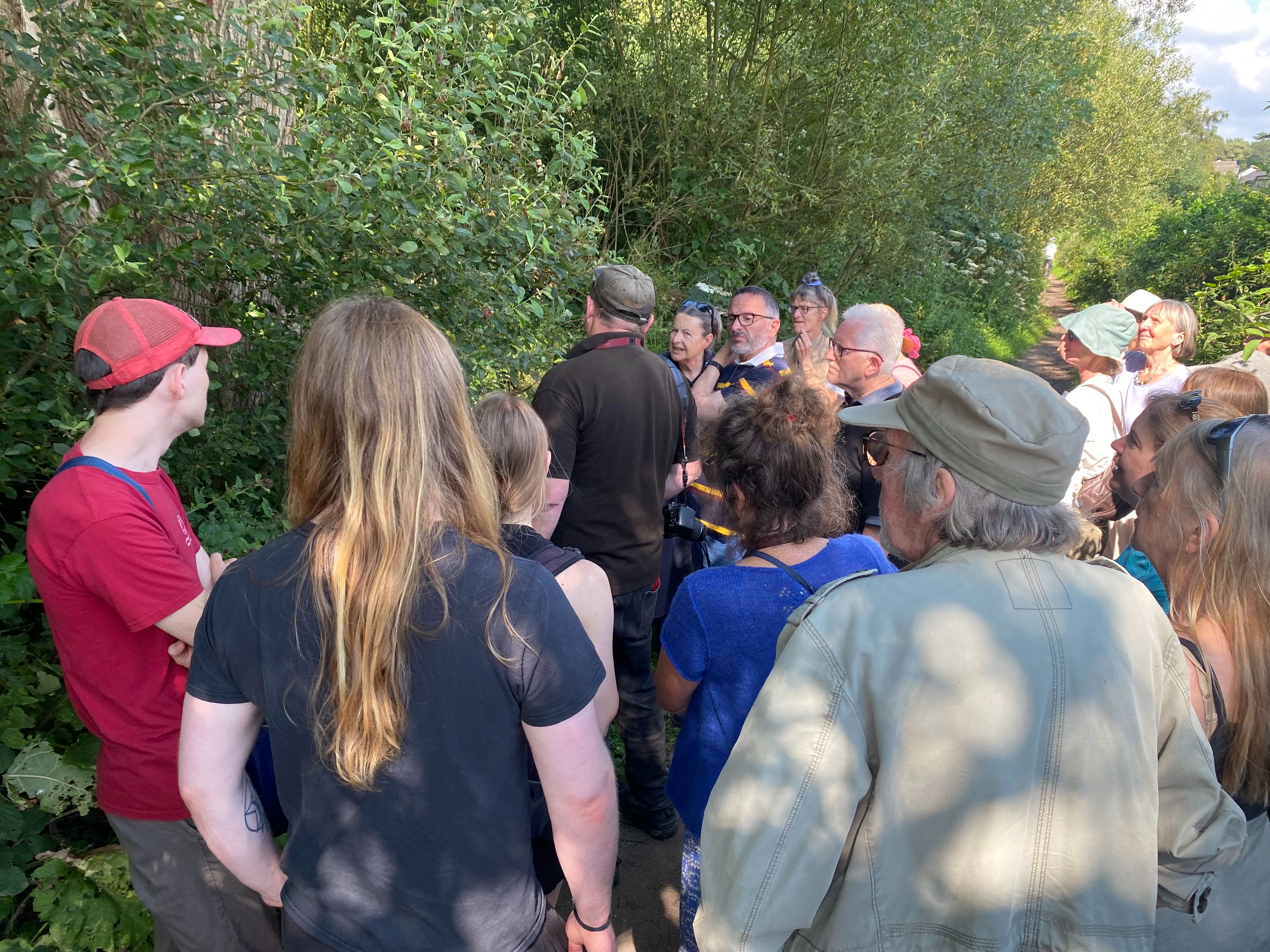In July 2024 we held our Tree Ecology and Identification walk which was kindly facilitated by Dr Duncan Slater of Myerscough College. Duncan gave a wonderful talk packed with a variety of knowledge, including some insights to his PhD regarding how tree junctions are formed. The walk was thoroughly enjoyed by all who attended, and we all took away something from this very interesting discussion.
A brief snippet from Dr Duncan Slater's post after facilitating our walk:
"This is a secondary woodland that has generated on the site of an old linoleum factory after it was demolished, connecting on its northern side to a popular cycle-track. Threatened with development several times, it has been saved as a natural resource for the citizens of Lancaster - and the Friends group is very active in making environmental improvements to the site (which is still seriously littered with industrial levels of linoleum and other contaminants.
Key aspects of my talk were associated with how the site could gain greater biodiversity through planting and management. Currently, there are only four dominant woody species on this site: hawthorn (Crataegus monogyna), sallow (Salix caprea), sycamore (Acer pseudoplatanus) and ash (Fraxinus excelsior) - the latter often exhibiting signs of ash dieback. We considered meandering woodland boundaries, ecotones, creation of snags and coppicing, as well as introducing new (mostly native) species to this limited mix of woody plants.
This unplanned walk-and-talk seemed to go well - lots of good questions from those attending - and a lot of time spent in the shade, which was good on a hot afternoon in Lancashire 😎🌞🌳🌳"
We have posted Dr Duncan Slater's LinkedIn profile below for anybody interested in finding out more about trees and forest ecology.
